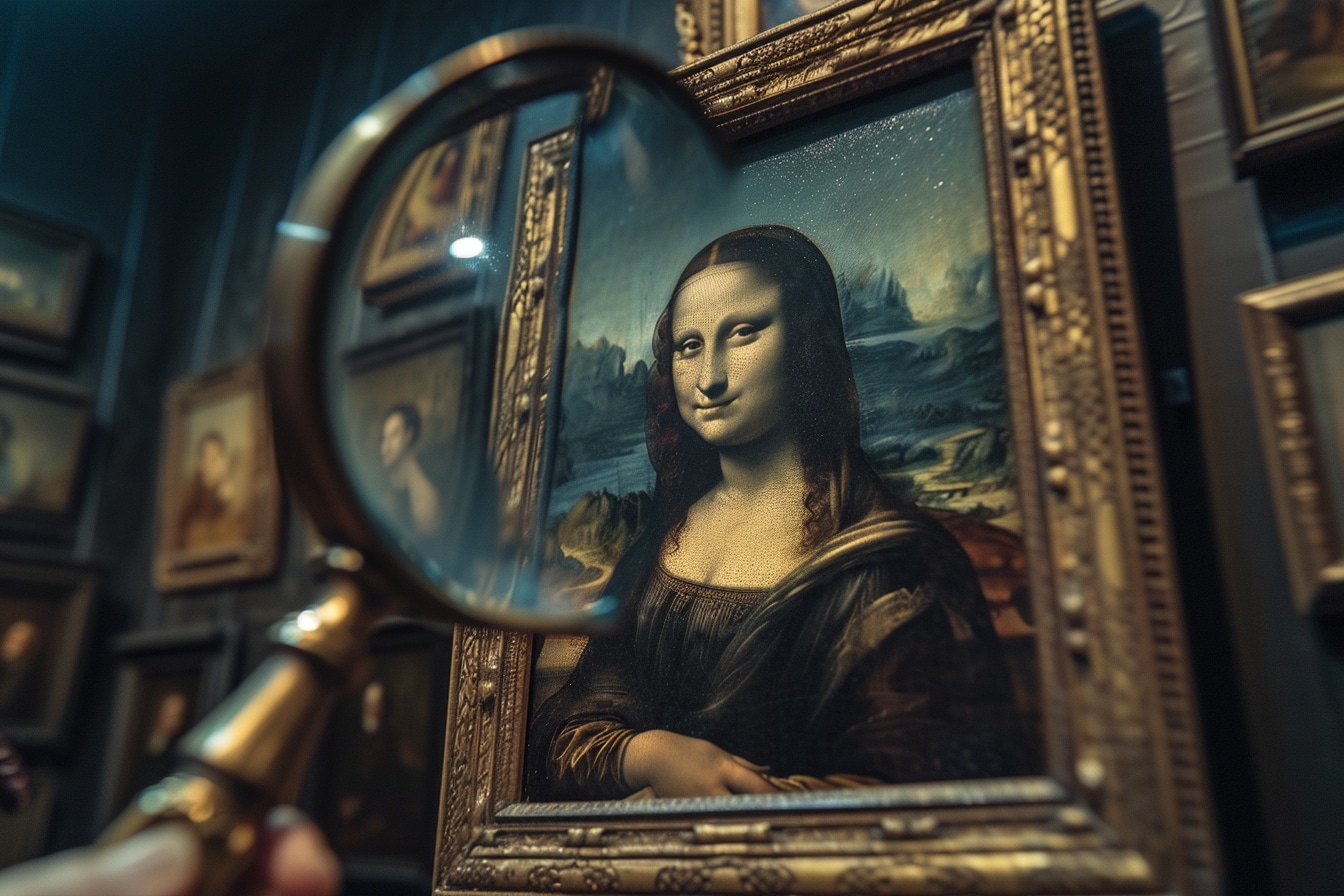Unveiling the Enigma: The Enduring Allure of Mona Lisa’s Timeless Charm

The Mona Lisa, the immortal and enigmatic portrait painted by Leonardo da Vinci, retains its position as the world’s most famous masterpiece. So, what are the reasons for its borderless notoriety, this ability to captivate millions of visitors to the Louvre each year? The work, also known as the Mona Lisa, offers a combination of mystery and artistic perfection that continues to seduce and intrigue.
Unrivaled technical mastery
One of the most remarkable aspects of the Mona Lisa is da Vinci’s innovative use of the sfumato technique. This subtle approach to blurring gives the work an almost unreal quality, delicately blurring the boundaries between shadows and light. Spectators find themselves immersed in reflection on what is revealed and what remains secret in the Mona Lisa’s gaze.
The mystery of his expression has fueled countless theories and interpretations. The Mona Lisa’s smile seems to change depending on the angle of view and the emotional state of the viewer. This emotional ambiguity, where happiness seems to coexist with a hidden melancholy, provokes a perpetual and renewed fascination.
A story strewn with anecdotes and adventures
The very life of the work is a source of fascination. The Mona Lisa has passed through the centuries, collecting stories of her flight in 1911, her reappearance and her return to France. These adventures extrapolated from the canvas to the pages of history gave him an aura of legend, thus exacerbating public interest.
The famous owners of the Mona Lisa adds another layer to her legend. From Francis I, who acquired it to make it a treasure of the French crown, to its current status as a centerpiece at the Louvre, the provenance of the Mona Lisa speaks to the collective imagination.
The influence of the Renaissance and Leonardo Da Vinci
A multi-faceted renaissance master
Leonardo da Vinci is not only a painter but also an inventor, scientist, engineer and philosopher of the Renaissance. His genius transcends disciplines and eras, giving each of his works historical importance and intrinsic depth.
The creator of the Mona Lisa was a meticulous observer of nature and the human condition. His numerous anatomical studies reveal an advanced understanding of the human body, which is reflected in the precision of the Mona Lisa’s features.
A symbol of rebirth
The Mona Lisa embodies the very essence of the Renaissance, a time of reevaluation of the arts, science and philosophy. It symbolizes the intersection of classical aesthetics and the new frontiers of human thought that emerged during this fundamental period.
This period saw an increased valuation of individualism and personal expression, concepts which are reflected in the Mona Lisa’s direct gaze towards the viewer. It thus seems to establish a link between the time of its creation and the contemporary world, thus spanning the centuries.
The modern cultural icon
A pop culture star
The Mona Lisa has become an omnipresent cultural icon, appearing in advertising, films, literature and even street art. This media craze reinforces its status as a universally recognized and constantly renewed symbol.
The effect of replication plays a role in the familiarity of the work. Reproduced endlessly, the Mona Lisa is part of the modern collective imagination. This omnipresence in cultural spheres is constantly expanding its audience and its footprint in world memory.
A repository for artists
Many contemporary artists, like Andy Warhol or Banksy, have reinterpreted the Mona Lisa, reinscribing it in current contexts which raise questions about art, celebrity and society. Each appropriation becomes a form of dialogue between the past and the present, between the genius of da Vinci and contemporary concerns.
The unsolved mysteries of the lady with the ermine
Other mysteries continue to arouse curiosity around the Mona Lisa. The identity of the woman represented still sparks debate among historians. While some suggest it is Lisa Gherardini, others put forward various alternative theories, including the idea that da Vinci may have painted a feminized self-portrait.
The opaque technique and layers of varnish have also been sources of speculation over time. Scientists and curators regularly focus on investigating the nuances hidden under the layers of paint, gradually revealing the secrets of its artistic execution.
A constantly evolving puzzle
Each scientific discovery and technological advance offers new tools to examine the Mona Lisa more closely, promising future revelations about its origins and history. The continued attention of art experts, combined with the continued passion of the general public, ensures that the mysteries of the Mona Lisa will remain at the center of cultural and scientific debate.
The Mona Lisa therefore never ceases to ask questions both historically and in terms of artistic representation and interpretation. She embodies the power of art to transcend the ages, to challenge understanding and to stimulate collective imagination.
Towards a new era of artistic recognition

The fame of the Mona Lisa seems to herald an era where art is not only contemplated but actively discussed, examined and, at times, even debated. The relationship between art and its audience is increasingly interactive, and the Mona Lisa is at the forefront of this phenomenon.
The future of the Mona Lisa, as well as its continued impact on global culture, may well hold surprises and unexpected turns. What will a closer analysis of the paint pigments reveal? Is the appearance of new historical theories to be expected?
The Mona Lisa in the era of globality
Today, the Mona Lisa transcends its materiality to become an intense symbol of global connection, reflecting how art is accessible to all and shared on a global scale. It perfectly illustrates how an art object can nourish a dialogue that is not limited by language, culture or geography.
In front of the board, the barriers collapse; there is only the work and the spectator, linked by a universal feeling of curiosity and wonder. And this is perhaps the ultimate secret of the Mona Lisa: its unique ability to establish a silent communication that resonates in the souls of those who contemplate it.
Art as a bridge between the ages
Contemplating the Mona Lisa is an almost temporal experience, a face-to-face encounter with a bygone era which, in a certain way, still seems alive. Da Vinci’s art, especially through this portrait, serves as a bridge between the past and the present, and probably also the future.
The careful examination of the painting by experts in different fields continues to contribute to an ever-evolving narrative, confirming the Mona Lisa’s prominent place in the art world. Future generations could achieve an even deeper knowledge of the work, perpetually feeding the celebrity machine.
Contemplation of the Mona Lisa awakens lasting reflection on the nature of fame and artistic survival. Its history is far from fixed, and its influence is constantly reinvented through interpretations, debates and the constant search for truth.
The Mona Lisa continues to captivate, challenge and inspire. The conversation around her is still active, her story is written in the present tense, and her enigma remains open, inviting an endless quest for understanding and appreciation. The question that persists is what the future holds for this portrait that never ceases to fascinate and what new light can be shed on the mystery of his indecipherable smile.
Comments
Leave a comment